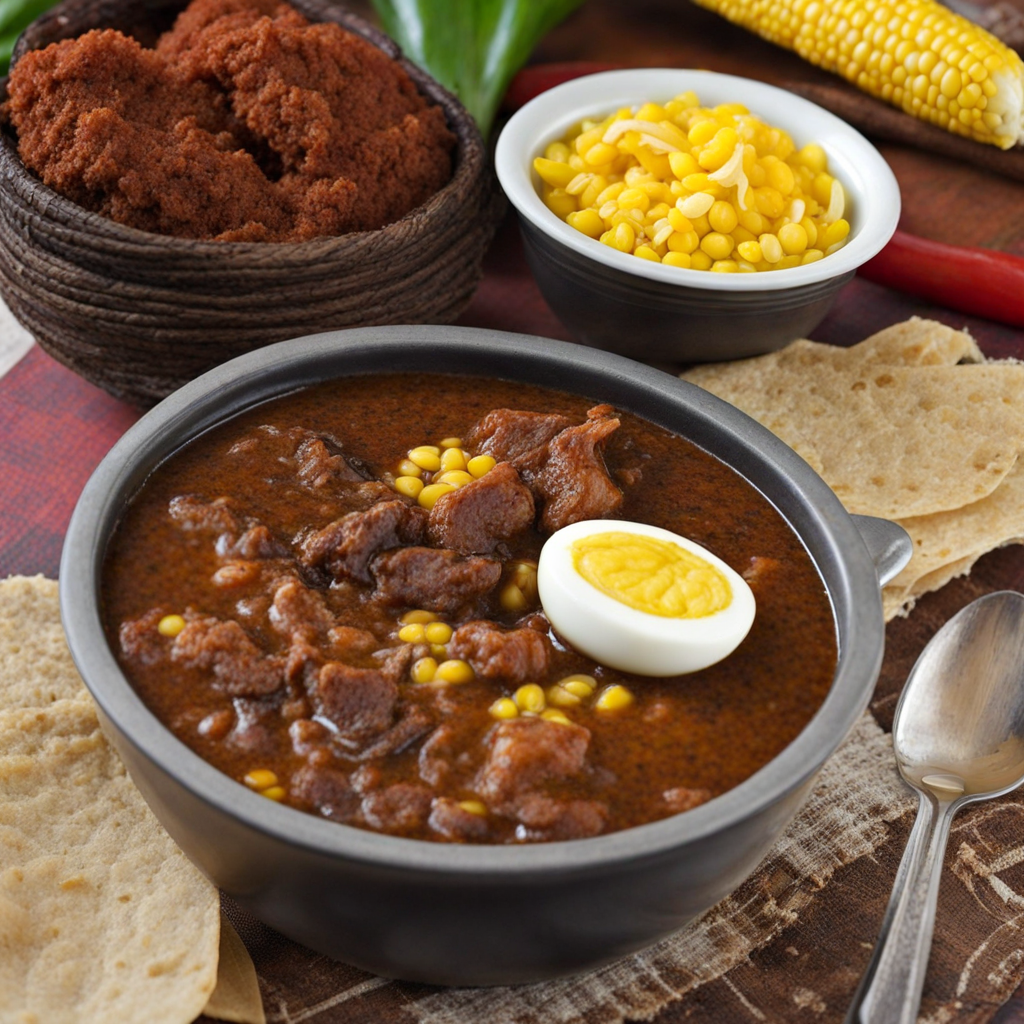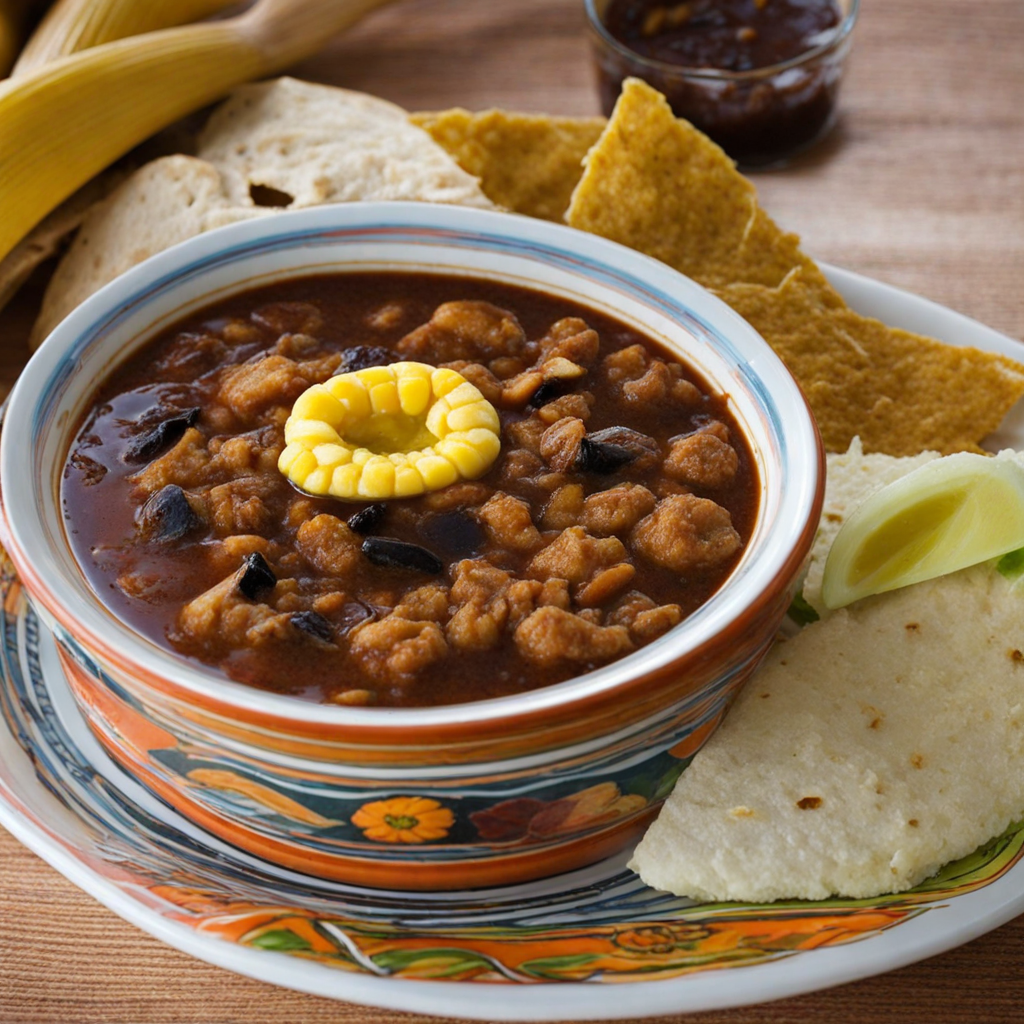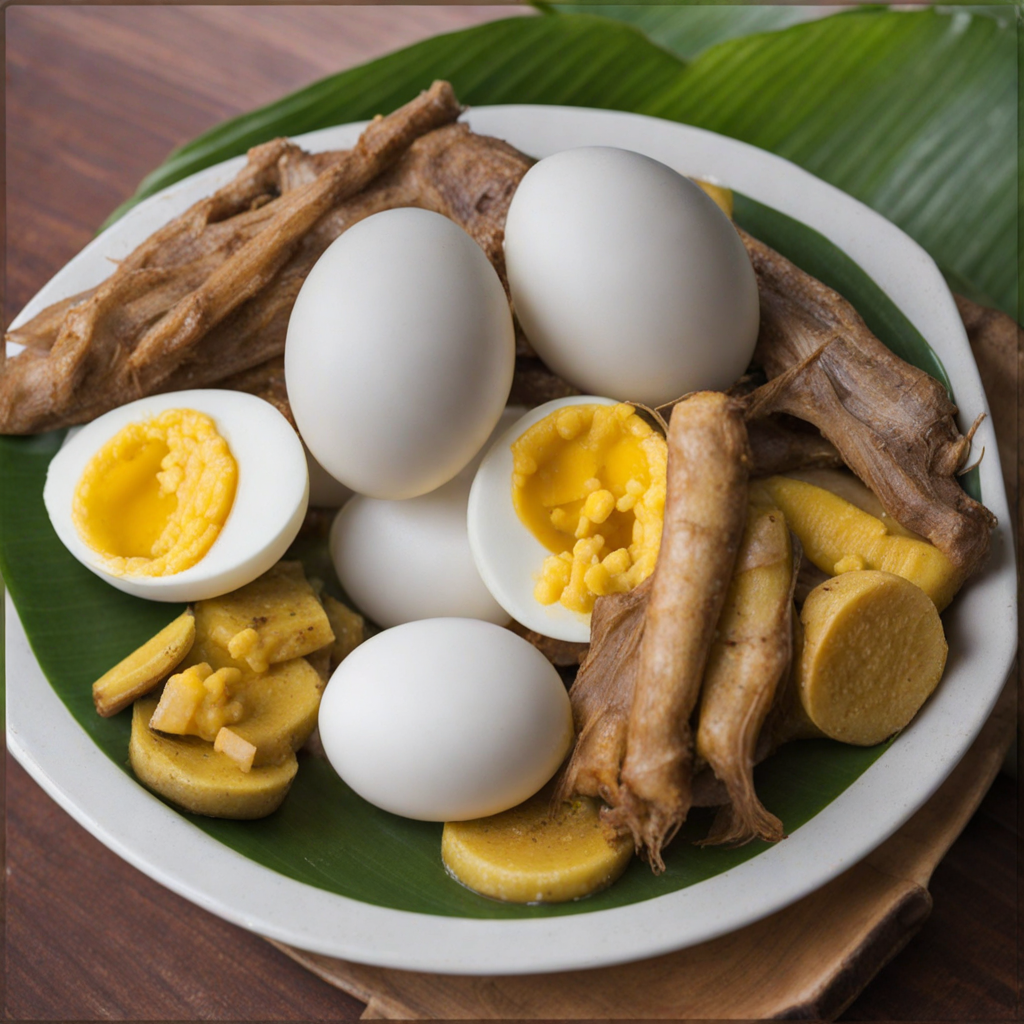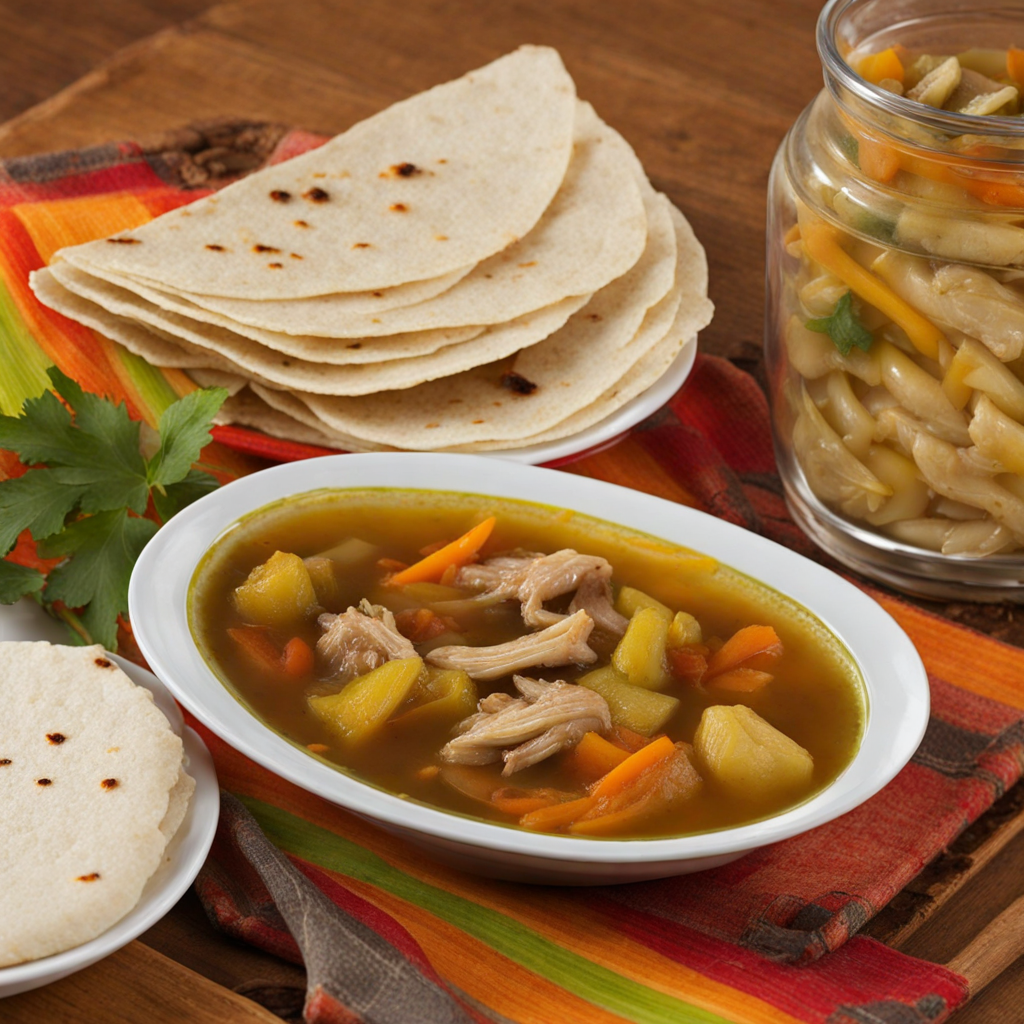Chirmole
Chirmole, a traditional dish hailing from Belize, is a delightful blend of flavors that embodies the country’s rich culinary heritage. This savory stew is primarily made with chicken, though variations can include other meats such as beef or pork. The standout feature of Chirmole is its unique sauce, which is crafted from roasted tomatoes, peppers, and a blend of spices, including achiote, that give the dish its characteristic deep red hue. As the ingredients meld together, they create a rich, smoky flavor profile that tantalizes the taste buds and invites you to explore the layers of taste present in each spoonful. The preparation of Chirmole often includes a process of toasting and blending spices, which enhances the dish's aromatic qualities. Once the chicken is cooked and tender, it is simmered in the vibrant sauce, allowing the flavors to infuse and meld beautifully. The result is a comforting and hearty stew that is perfect for sharing with family and friends, often served alongside warm corn tortillas or rice. The combination of textures and tastes makes every bite a celebration of Belizean cuisine. Chirmole is not just a meal; it’s a cultural experience. Traditionally enjoyed during special occasions or community gatherings, this dish brings people together, showcasing the warmth and hospitality of Belizean culture. With its robust flavors and comforting essence, Chirmole offers an inviting taste of Belize that leaves a lasting impression, making it a must-try for anyone looking to explore the diverse and vibrant world of Central American food.
How It Became This Dish
The History of Chirmole: A Culinary Treasure from Belize #### Origins and Cultural Roots Chirmole, a traditional dish from Belize, holds a unique place in the nation’s culinary landscape, reflecting its rich cultural heritage and the blending of diverse influences. This dish, often referred to as "black recado," is characterized by its deep, rich flavors, primarily derived from a special sauce made with roasted black chili peppers, tomatoes, and spices. The origins of Chirmole can be traced back to the indigenous Maya civilization, one of the earliest inhabitants of the region, who utilized local ingredients and ancient cooking techniques to create flavorful dishes. The word "Chirmole" is believed to have Mayan roots, specifically from the term "chimole," which was used to describe a sauce that accompanied various traditional foods. The Maya cultivated a variety of crops, including corn, beans, and peppers, which remain staples in Belizean cuisine today. The incorporation of these ingredients into Chirmole showcases the resilience and adaptability of indigenous culinary practices over centuries. As Belize evolved through the influence of Spanish colonization, African traditions, and the arrival of other immigrant communities, Chirmole began to absorb these diverse cultural influences. The Spanish introduced new cooking techniques and spices, while the African diaspora contributed to the flavor profiles and preparation methods. This fusion of cultures has helped Chirmole develop into a dish that is both traditional and contemporary, embodying the spirit of Belize’s multicultural society. #### Ingredients and Preparation The key to a successful Chirmole lies in the preparation of the recado sauce, which is a labor of love. The primary ingredient, black chili peppers (often referred to as "chile negro"), is roasted to bring out its smoky flavor before being blended with tomatoes, garlic, and spices. This sauce is then simmered with meat, typically chicken or pork, creating a hearty and flavorful dish. Chirmole is traditionally served with rice and beans, which are staples in Belizean households, symbolizing the importance of communal dining and the sharing of food among family and friends. The dish is often enjoyed during special occasions and family gatherings, reinforcing its role in social and cultural traditions. #### Cultural Significance Chirmole is more than just a meal; it is a representation of Belize’s diverse identity. The blending of indigenous, Spanish, and African culinary traditions in Chirmole highlights the importance of food as a medium for cultural expression and continuity. The dish serves as a reminder of the historical narratives that have shaped Belize, showcasing the resilience of its people and their ability to adapt and thrive. In Belize, Chirmole is often associated with celebrations and significant events. Families gather to prepare and share this dish during holidays, birthdays, and other special occasions, reinforcing social bonds and fostering a sense of community. The act of cooking and sharing Chirmole becomes a ritual that connects generations, allowing elders to pass down their culinary knowledge and traditions to younger family members. Moreover, Chirmole has gained recognition beyond the borders of Belize. As Belizean cuisine becomes increasingly popular on the global stage, Chirmole serves as a culinary ambassador, inviting people to explore the flavors and traditions of Belize. Local restaurants and food festivals often feature Chirmole, allowing visitors to experience the authenticity of Belizean culture through its food. #### Development Through Time As Belize has evolved, so too has Chirmole. The dish has undergone various adaptations, with cooks experimenting with different meats, vegetables, and spices to cater to changing tastes and dietary preferences. While traditional recipes remain cherished, modern interpretations have emerged, reflecting the dynamic nature of Belizean cuisine. In contemporary Belize, there is a growing emphasis on sustainability and the use of locally sourced ingredients. Many chefs and home cooks are returning to traditional methods of farming and cooking, ensuring that the flavors of Chirmole remain true to their roots. This commitment to sustainability not only preserves the integrity of the dish but also supports local farmers and the agricultural economy. With the rise of food tourism in Belize, Chirmole has become a must-try dish for visitors seeking an authentic taste of the country. Culinary tours often include cooking classes where participants can learn to make Chirmole from scratch, deepening their understanding of Belizean culture and the significance of this beloved dish. Such initiatives not only celebrate the culinary heritage of Belize but also foster cross-cultural exchanges, allowing people from different backgrounds to connect through the universal language of food. #### Conclusion Chirmole is more than just a dish; it is a reflection of Belize’s complex history and cultural identity. Rooted in indigenous traditions and shaped by various influences over time, Chirmole embodies the spirit of resilience, adaptability, and community. As the dish continues to evolve and gain recognition both locally and globally, it serves as a testament to the power of food to connect people, tell stories, and preserve traditions. Through the preparation and enjoyment of Chirmole, Belizeans celebrate their heritage while inviting others to partake in the rich tapestry of flavors that define their culinary landscape. Whether enjoyed at a family gathering or in a bustling restaurant, Chirmole remains a cherished dish that captures the essence of Belize—a place where diverse cultures converge to create a vibrant and delicious food culture.
You may like
Discover local flavors from Belize







